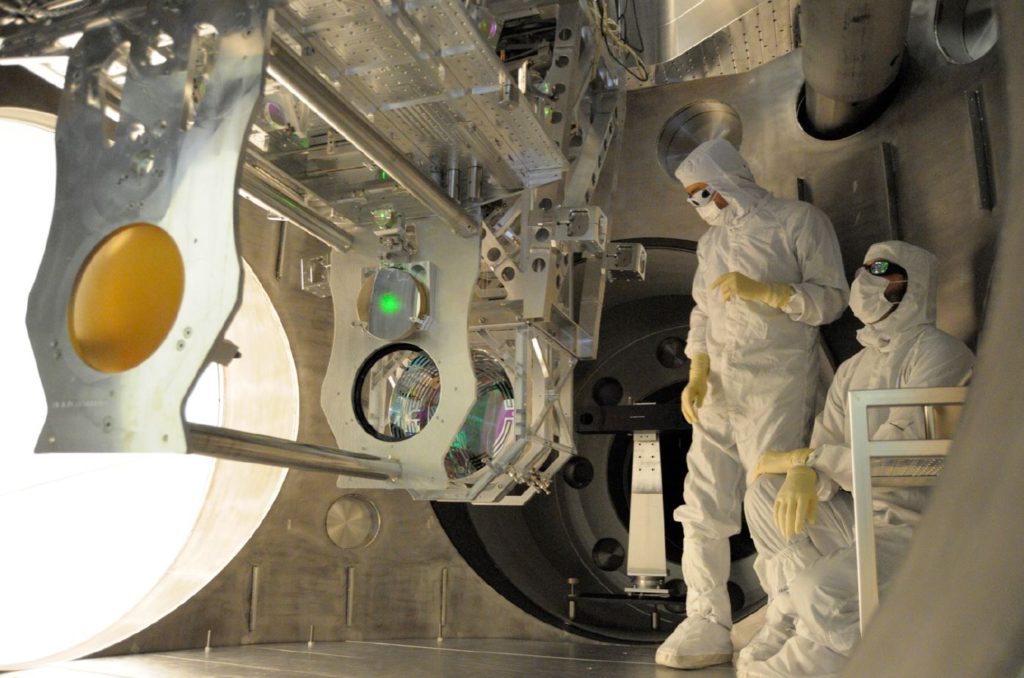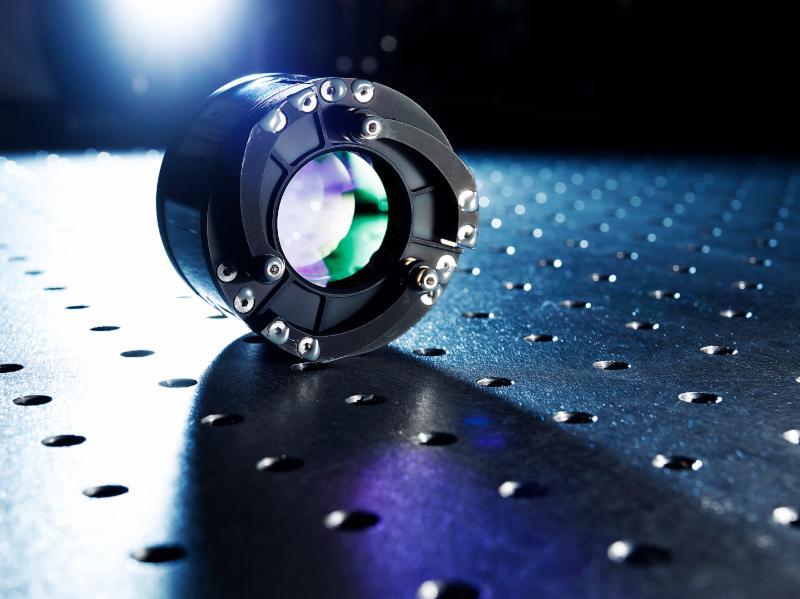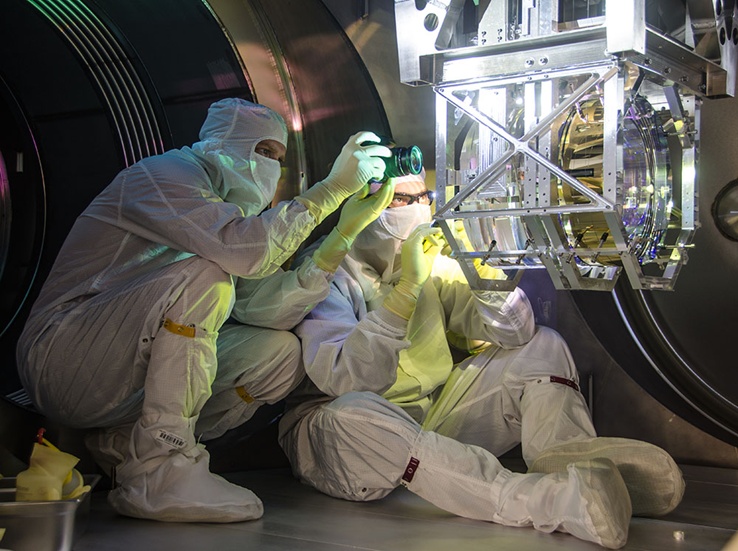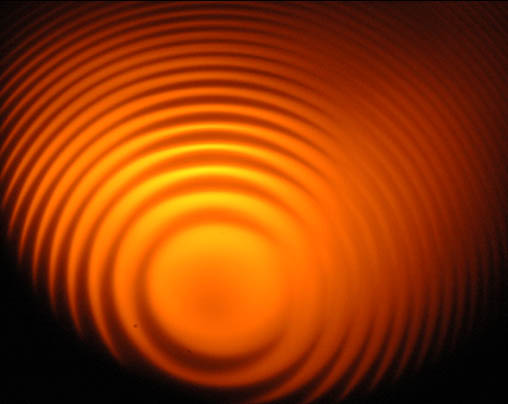
Interferometers utilize interference patterns created by the collision of energy-carrying waves to make incredibly accurate and precise measurements. Courtesy of LIGO Scientific Collaboration.
Introduction
A single human hair is approximately 80,000-100,000 nanometers wide. Now, imagine a distance that measures several hundred times smaller than a human hair. Such small distances are often difficult to conceptualize and are even more difficult to measure with high accuracy and precision. However, thanks to a device called an interferometer, minuscule measurements like these are possible for many different areas.
Interferometers are used to make small measurements with incredibly high accuracy and precision. They operate mainly under a principle called interference. Interference describes the phenomenon that occurs when two energy-carrying waves, such as light, radio or sound, collide. In physics, when two waves overlap, the energy that they carry intermixes and produces a third wave. This process is called superposition. The size and shape of the third wave is dependent on the patterns of the two waves that overlap. Shining a wave like this onto a screen provides a characteristic pattern of light and dark areas called interferences fringes. These interference patterns are what an interferometer studies and measures. Additionally, information derived from these patterns is used to make precise wavelength measurements, measurements of very small distances, thicknesses, and refractive indices.
Although there are many types of interferometers that exist today with varying configurations, the general concept behind a basic interferometer involves using a beamsplitter to create interfering light beams. As the light beams hit the mirrors within a configuration, the reflected waves combine, an interference pattern forms, and a detector analyzes the pattern. The patterns generated by interferometers provide information about the object or phenomenon in question.
Types and Applications of Interferometers
Today, some of the most common types of laser interferometers are the Michelson, Fabry-Perot, Fizeau, and Mach-Zehnder variations. They each offer different advantages that are applicable in various fields of manufacturing and research.

Interferometers have various configurations that provide many advantages in a variety of applications. Courtesy of Commercial Space.
Michelson Interferometers
The Michelson interferometer is one of the best known configurations due to its role in the famous Michelson-Morley experiment. In 1887, this experiment disproved the existence of space-filling substance, aether, and eventually led to the revolutionary special theory of relativity. Again, in 2016, a Michelson interferometer made history as it was applied in the Laser Interferometer Gravitational-Wave Observatory (LIGO), leading to the first direct detection of gravitational waves and confirming an important prediction of general relativity. Amazingly, LIGO is so powerful that it can measure a distance 1/10,000th of a proton.

LIGO, a Michelson-configurated interferometer, led to the first direct detection of gravitational waves in 2016. Courtesy of LIGO Scientific Collaboration.
Today, many variations of the Michelson interferometer exist, including the Twyman–Green interferometer. The Michelson interferometer configuration finds a number of different applications, such as in astronomical interferometry, by measuring the distances between stars and their diameters. They are also helpful in studies of the upper atmosphere by analyzing temperature, winds, and measuring Doppler effects in airglow and auroras. It also acts as a component in larger imaging systems to study solar variability, illustrate the Sun’s interior, and different aspects of magnetic activity.
Fabry-Perot Interferometers
About 10 years after the Michelson-Morley experiment in 1899, Fabry-Perot interferometers evolved from the Michelson interferometer. In general, Fabry-Perot interferometers create clearer and sharper interference patterns that are easier to see and measure.

The interference pattern produced by a Fabry-Perot-configured interferometer. Courtesy of HyperPhysics.
They also have the ability to function as tunable wavelength filters in micro-spectrometers and hyperspectral imagers. However, the Fabry-Perot interferometer has many applications, but most are widely used to control and measure the wavelengths of light. This includes applications like telecommunications, high precision spectroscopy experiments, and atomic transition imaging.
The Fizeau Interferometers
The Fizeau interferometer is another variation of the Michelson interferometer. Generally, it is considered easier to use than the Fabry-Perot interferometer and is optimal for making optical and engineering measurements. Additionally, Fizeau interferometers are the most commonly used interferometer for testing optical components and systems used in space-related instrumentation. In fact, in the 1990s, Fizeau interferometry was employed to design a corrective optical lens when the primary mirror of the Hubble Space Telescope had been polished to the wrong shape.
It is also able to measure the speed of light, evaluate optical components and systems, validate system performance, and measure flat and spherical surfaces. Additionally, many different types of optical instrumentation are tested using Fizeau interferometry as it is able to analyze optical flats, front surface mirrors, and glasses.
Mach-Zehnder Interferometers
Mach-Zehnder interferometers, invented in the early 1890s, measure phase shift variations in light beams. The Mach-Zehnder interferometer uses two beam splitters, as opposed to one in the Michelson interferometer, to produce two output beams. These beams can then be analyzed individually.
They offer a unique advantage in that they are flexible in their ability to locate interference patterns, which is not available with other interferometers. They are simple, yet highly configurable, allowing for many research applications specifically in quantum mechanics, fluid dynamics, and aerodynamics.
Market Size for Interferometers
Interferometers offer the advantages of nano-scale and long distance measurements along with precise resolution and accuracy that many other optical instruments simply cannot offer. Today, the major application areas for laser interferometers are electronic manufacturing, automotive, semiconductor and machine shop industries.
The automotive and semiconductor industries require production of highly precise and complex parts and therefore, are the largest application areas for laser interferometers. Additionally, the high cost of laser interferometers limits their use to large companies, which is why the automotive sector comes in first for the largest customer of laser interferometers. In the automotive industry, the key applications of laser interferometry are alignment, dimensional measurement, profiling, and control. It is the driving force behind an increasing global market for laser interferometers, predicted to reach $146.13 million by 2022.
